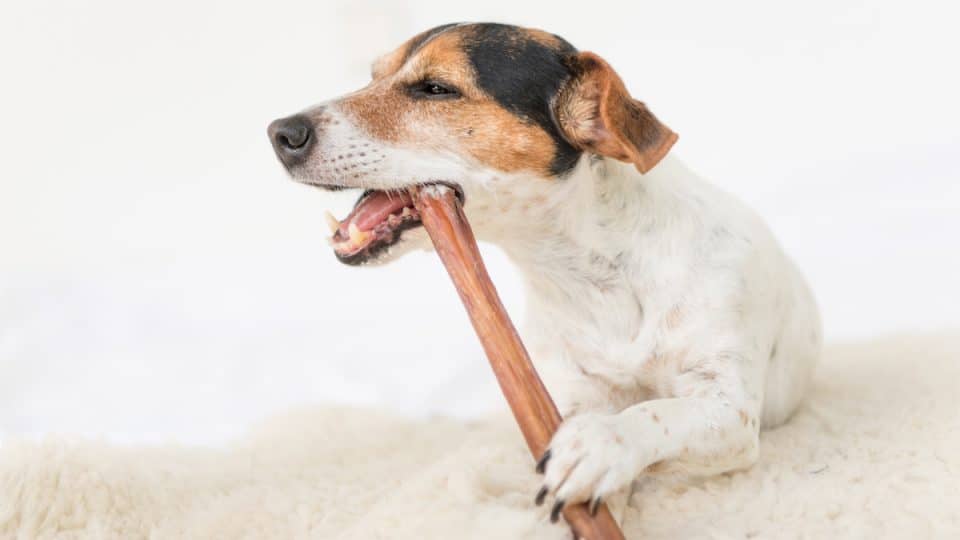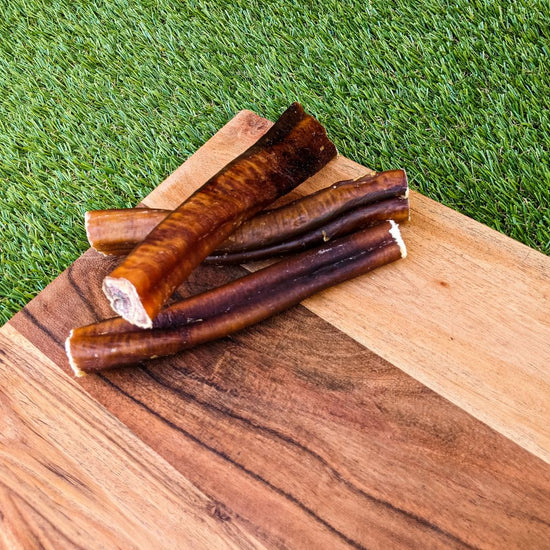
The Comprehensive Guide to Choosing the Right Dog Chews for Your Pet

Choosing the right dog chews is crucial for your pet's health, happiness, and overall well-being. Dog chews provide mental stimulation, dental benefits, and a healthy outlet for natural chewing behaviors. This comprehensive guide covers various types of dog chews, their benefits, and tips for selecting the best ones for your furry friend. Designed to be SEO-friendly, this guide ensures that your website attracts more traffic and engages your readers effectively.
Section 1: Benefits of Dog Chews
1. Dental Health: Chewing helps reduce plaque and tartar buildup on your dog's teeth, promoting better dental health. Certain chews are specifically designed to clean teeth and massage gums, reducing the risk of periodontal disease.
2. Mental Stimulation: Chewing provides mental stimulation, keeping your dog engaged and preventing boredom. This is especially important for high-energy breeds that need constant activity.
3. Anxiety and Stress Relief: Chewing can help alleviate anxiety and stress in dogs. It provides a calming activity that can keep your dog occupied and reduce destructive behaviors associated with anxiety.
4. Physical Exercise: Chewing also offers a form of physical exercise, particularly for the jaw muscles. This can be beneficial for overall physical health and well-being.
Section 2: Types of Dog Chews
1. Natural Chews:
- Bully Sticks: Made from the pizzle of a bull or steer, bully sticks are high in protein and easily digestible. They are long-lasting and great for dental health.
- Rawhide: While popular, rawhide chews can pose a choking hazard and may cause digestive issues. Opt for high-quality, naturally processed rawhide to reduce these risks.
- Pig Ears: These are softer chews suitable for light chewers. They are high in fat, so they should be given in moderation.
- Antlers: Naturally shed deer or elk antlers are extremely durable and long-lasting. They are ideal for aggressive chewers but should be monitored to avoid tooth fractures.
2. Edible Chews:
- Dental Chews: Formulated to clean teeth and freshen breath, dental chews come in various shapes and sizes. Look for those approved by veterinary dental organizations.
- Jerky Treats: Made from dried meat, these chews are high in protein and usually well-received by dogs. Ensure they are free from additives and preservatives.
3. Synthetic Chews:
- Nylon Bones: Durable and long-lasting, nylon bones can withstand aggressive chewing. Ensure they are size-appropriate to prevent breakage.
- Rubber Chews: Rubber toys like KONGs can be stuffed with treats or peanut butter, providing both mental stimulation and chewing satisfaction.
4. Chew Toys:
- Interactive Toys: Puzzle toys and treat dispensers keep dogs engaged and provide a reward for their efforts. These are great for mental stimulation.
- Rope Toys: Ideal for games of tug-of-war, rope toys also help clean teeth as they chew. Ensure the rope is strong and free from loose threads.
Section 3: Choosing the Right Chew for Your Dog
1. Consider Your Dog’s Chewing Style:
- Aggressive Chewers: Durable chews like antlers, bully sticks, and nylon bones are ideal.
- Moderate Chewers: Dental chews, pig ears, and rubber toys work well.
- Light Chewers: Soft chews like jerky treats and softer rawhide are suitable.
2. Size and Breed: Choose chews that are appropriate for your dog’s size and breed. Small dogs may struggle with large chews, while large dogs can break and swallow small chews, posing a choking risk.
3. Health and Dietary Needs: Consider any dietary restrictions or health conditions your dog may have. For example, low-fat chews are better for overweight dogs, and hypoallergenic chews are suitable for dogs with food allergies.
4. Safety: Always supervise your dog while they are chewing to prevent choking or ingestion of large pieces. Choose high-quality, natural chews without artificial additives.
Section 4: Introducing Bully Sticks
1. What Are Bully Sticks? Bully sticks are natural dog chews made from the pizzle of bulls or steers. They are high in protein, low in fat, and easily digestible, making them a popular choice among dog owners.
2. Benefits of Bully Sticks:
- Dental Health: Helps reduce plaque and tartar buildup.
- Long-Lasting: Provides prolonged chewing satisfaction.
- Easily Digestible: Unlike rawhide, bully sticks are easily digestible and less likely to cause digestive issues.
3. Choosing the Right Bully Stick:
- Size and Thickness: Select the right size and thickness based on your dog’s chewing style and size.
- Odor-Free Options: Some bully sticks are treated to reduce odor, making them more suitable for indoor use.
4. Safety Tips:
- Supervise Chewing: Always supervise your dog while they chew.
- Proper Storage: Store bully sticks in a cool, dry place to maintain freshness.
Conclusion
Choosing the right dog chews is essential for your pet’s health and happiness. By understanding the benefits of different types of chews and selecting the appropriate ones for your dog’s needs, you can ensure they enjoy a safe and satisfying chewing experience. Remember to supervise your dog while they chew and consult with your veterinarian if you have any concerns about their chewing habits.
FAQs:
Q: How often should I give my dog chews? A: This depends on the type of chew and your dog’s chewing habits. Some chews can be given daily, while others should be limited to a few times a week.
Q: Are bully sticks safe for puppies? A: Yes, but choose bully sticks appropriate for your puppy’s size and supervise them while chewing.
Q: Can dog chews replace brushing my dog’s teeth? A: No, while dog chews can help reduce plaque and tartar, they should not replace regular dental care, including brushing and veterinary check-ups.
For more detailed information and resources, you can visit AKC, ASPCA, and Dog Chews.






